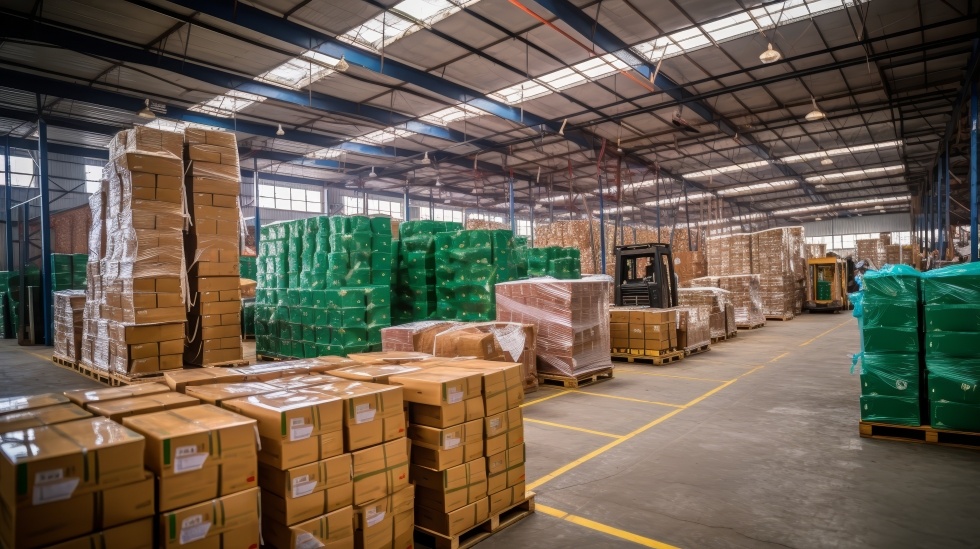Explore the World's Largest Tea Exporting Countries
Discover the largest tea exporters globally and their impact on the international market. Learn about the trends and future of tea exports in the world.

Tea, a cultural cornerstone in many societies, has fostered a vibrant, global trade network as diverse as the brews it offers. From the lush hills of Assam to the elevated plateaus of Kenya, nations across the globe compete for the prestigious title of the top tea export country. This article delves into the intricate world of tea exports, shining a spotlight on the nations that spearhead this billion-dollar industry and underscoring the global significance of tea exports.
Global Tea Market Overview
In 2024, the tea export landscape has seen significant shifts due to various global economic dynamics. China's largest exporter of tea in the world continues to dominate the market with a wide array of teas, including the predominantly favored green tea. Other countries like Kenya, India, and Sri Lanka also play crucial roles in the tea export arena, each contributing with their unique flavors and specialties.
The Largest Exporter of Tea in the World
As the paramount leader in the global tea market, China's tea export prowess is unmatched. In 2022, it exported approximately 375,300 tons of tea, valued at an impressive US$2.1 billion. This accounts for more than a fourth of the global tea exports, demonstrating its dominant position in the market. The diversity in Chinese tea, ranging from green tea, which is the most exported, to black, oolong, and scented teas, caters to a wide array of tastes and preferences worldwide. Most of these exports head to Northern and Western Africa, with Morocco being the largest purchaser, showcasing China's strategic market diversification and commitment to quality that keeps it at the forefront of the global tea industry.

Top 10 Largest Tea Export Countries in the World
The international tea market is a dynamic and ever-evolving field, constantly influenced by cultural preferences, economic shifts, and agricultural conditions. In the following sections, we delve into the detailed contributions of the largest tea exporting countries, illuminating how each nation's unique factors shape and reshape the global tea export landscape, highlighting the excitement and unpredictability of the industry.
1. China: The Green Tea Giant
Tea Export Value: $2.1 billion (28.6% of global exports)
China is not only the largest exporter of tea in the world but also specializes in a variety of teas, including the globally popular green tea, black tea, oolong, and scented teas. The majority of China's tea exports go to Africa, with Morocco being the top importer. Chinese tea exporters continue to focus on quality and diversity to maintain their leading position in the global market.
2. Kenya: The Black Tea Leader
Tea Export Value: $1.2 billion (16.3% of global exports)
As Africa's largest tea producer, Kenya's robust black teas are its claim to fame, finding major markets in Pakistan, Egypt, and the UAE. Despite fluctuations in currency, the demand for Kenyan tea remains strong due to its distinctive taste and quality.
3. Sri Lanka: Renowned for Ceylon Tea
Tea Export Value: $732.4 million (10% of global exports)
Known for its iconic Ceylon tea, Sri Lanka's tea industry is celebrated for its rich flavors and high quality. Despite reducing tea volume due to economic challenges, Sri Lanka continues to serve a global market spanning over 140 countries.
4. India: Diverse Tea Traditions
Tea Export Value: $687.9 million (9.4% of global exports)
India is famous for its diverse teas, including Darjeeling and Assam black teas. The country has seen a rise in exports due to the increasing popularity of its teas in Russia, the UAE, and the USA, despite facing economic challenges and competition.
5. Poland: Emerging Tea Exporter
Tea Export Value: $262.8 million (3.6% of global exports)
Poland stands out in the European market with a strong export presence characterized by a significant demand in Western markets like France and the USA. Polish tea exports include predominantly black teas.
6. Germany: A Hub for Diverse Tea Blends
Tea Export Value: $242.5 million (3.3% of global exports)
Germany's tea market is known for its variety including black, green, and herbal teas. With its central location in Europe, Germany serves as a key player in distributing and exporting high-quality teas.
7. Japan: The Land of Green Tea
Tea Export Value: $189.9 million (2.6% of global exports)
Japan is revered for its high-quality green teas like Sencha and Matcha. With a significant increase in green tea exports, Japan continues to influence global tea consumption trends, especially in the US and German markets.
8. UAE: Strategic Tea Trading Hub
Tea Export Value: $152.2 million (2.1% of global exports)
The UAE leverages its geographical location as a pivotal point in the tea trade, sourcing diverse teas from significant producers and serving various international markets.
9. United Kingdom: A Traditional Tea Nation
Tea Export Value: $135.7 million (1.9% of global exports)
Despite a slight decline, the UK remains a significant player in the tea export business, supported by iconic brands like Twinings and PG Tips which are popular globally.
10. Vietnam: Rising Star in Tea Exports
Tea Export Value: $130.7 million (1.8% of global exports)
Vietnam's tea industry has shown remarkable growth with a focus on green and specialty teas. The country's exports are increasing to markets that appreciate quality and sustainability in tea production.
The Role of Export Portal in Tea Trade
In conclusion, the global tea market continues to evolve, driven by both traditional tea-consuming nations and emerging markets. With its robust platform for international trade, Export Portal stands ready to support tea exporters and importers alike, facilitating connections and fostering trade relationships that span the globe. Whether you're looking to import the finest Darjeeling tea from India or the unique blends from China, Export Portal offers a gateway to the vast world of tea.






Comments 0